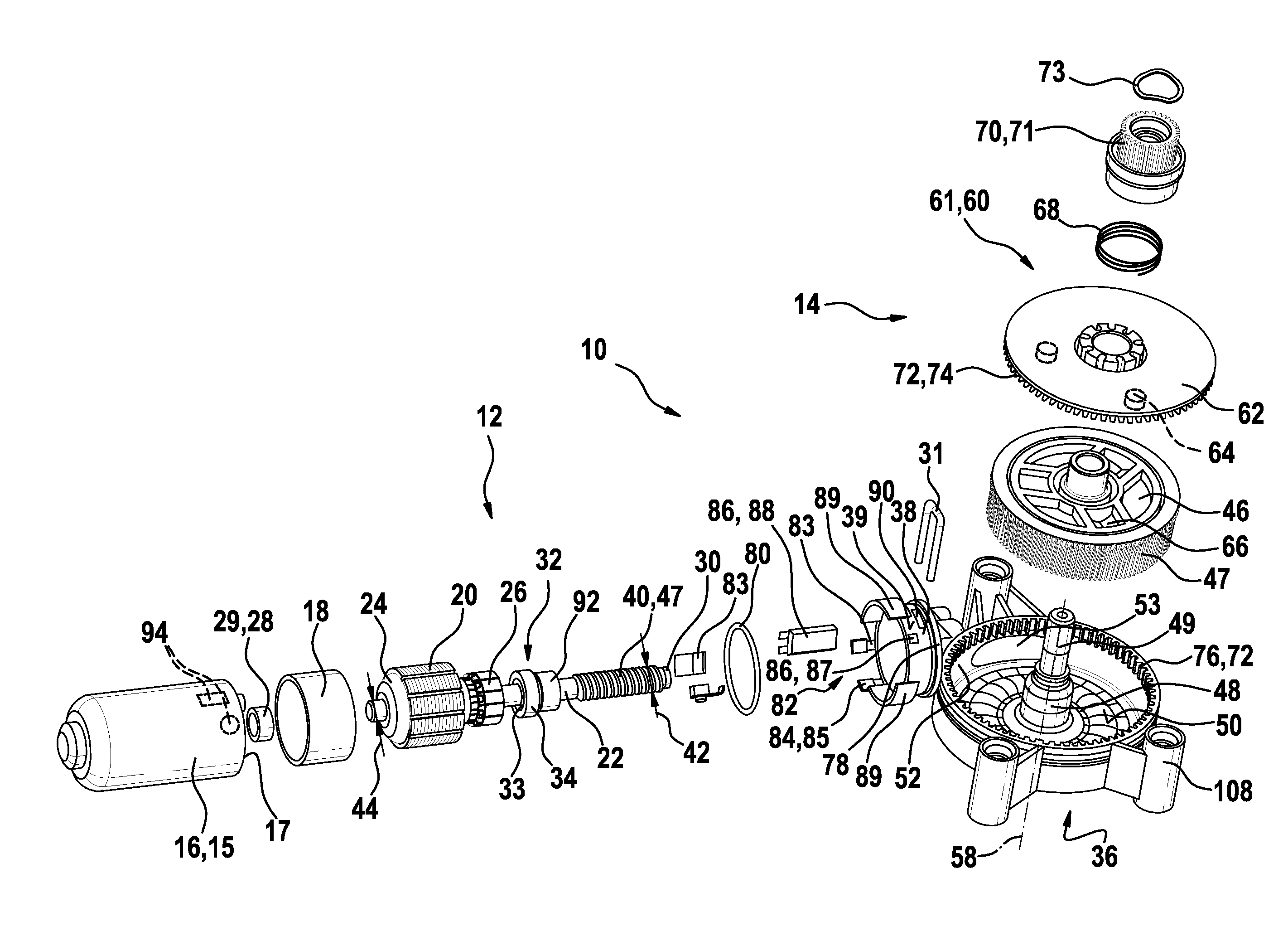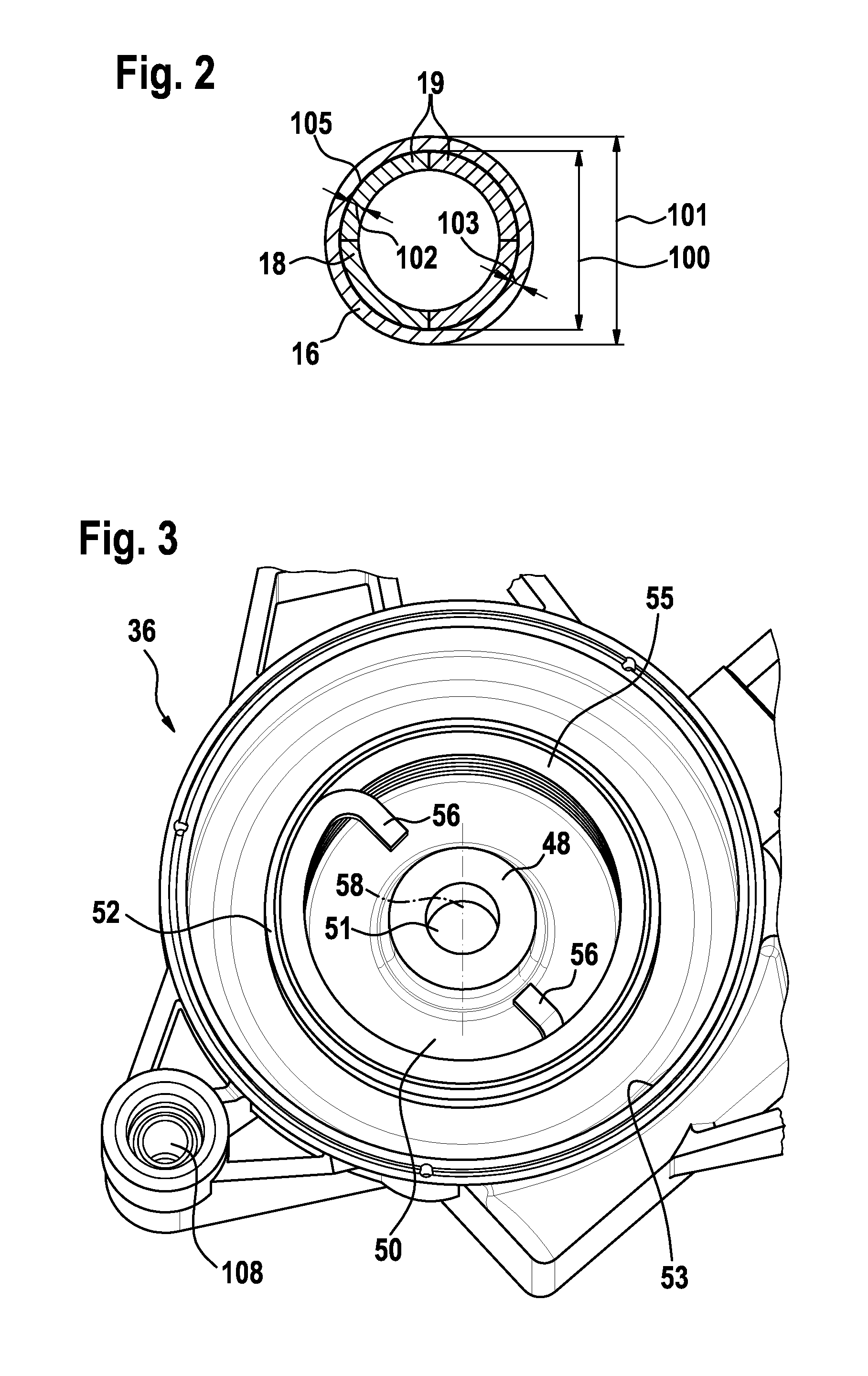Transmission drive unit having a self-locking device
a technology of transmission drive and self-locking device, which is applied in the direction of gearing, magnetic circuit shape/form/construction, wing accessories, etc., can solve the problems of large installation space and achieve the effects of reducing friction, low weight, and increasing the power density of the drive motor
- Summary
- Abstract
- Description
- Claims
- Application Information
AI Technical Summary
Benefits of technology
Problems solved by technology
Method used
Image
Examples
Embodiment Construction
[0024]FIG. 1 shows a transmission drive unit 10 which has a drive motor 12 and a transmission 14. The drive motor 12 has a pole pot 16 as motor housing 15, in which a toric magnet 18 is arranged as exciter magnet. In the exemplary embodiment, the toric magnet 18 is configured as a high energy permanent magnet which contains NdFnB as rare earth material. A laminate core 20 having a plurality of laminations 21 is arranged within the toric magnet 18, which laminate core 20 is fastened on a drive shaft 22. The stack of laminations 20 has an electric winding 24 which is connected to a commutator 26. The drive shaft 22 is mounted in the pole pot 16 by means of a sliding bearing 28 which is configured here as a sintered bronze bush 29. Here, the sliding bearing 28 is configured as a floating bearing, as a result of which the drive shaft 22 can be displaced in the sliding bearing 28 in the axial direction 23. A ball bearing 32 which, after final assembly, is fixed firmly in the transmission...
PUM
 Login to View More
Login to View More Abstract
Description
Claims
Application Information
 Login to View More
Login to View More - R&D
- Intellectual Property
- Life Sciences
- Materials
- Tech Scout
- Unparalleled Data Quality
- Higher Quality Content
- 60% Fewer Hallucinations
Browse by: Latest US Patents, China's latest patents, Technical Efficacy Thesaurus, Application Domain, Technology Topic, Popular Technical Reports.
© 2025 PatSnap. All rights reserved.Legal|Privacy policy|Modern Slavery Act Transparency Statement|Sitemap|About US| Contact US: help@patsnap.com



